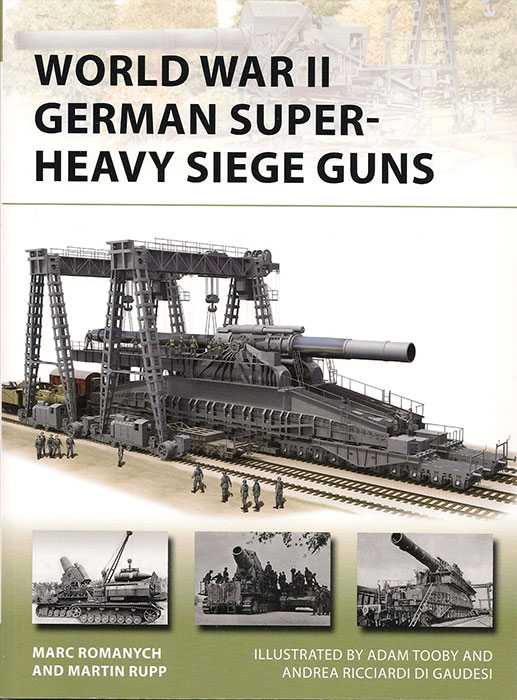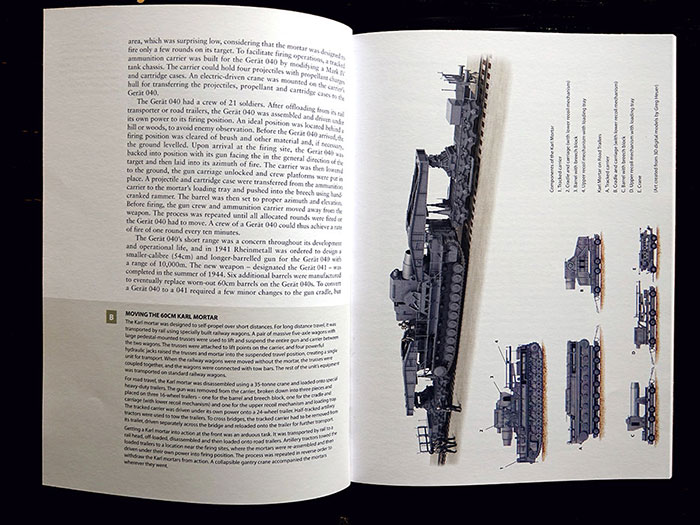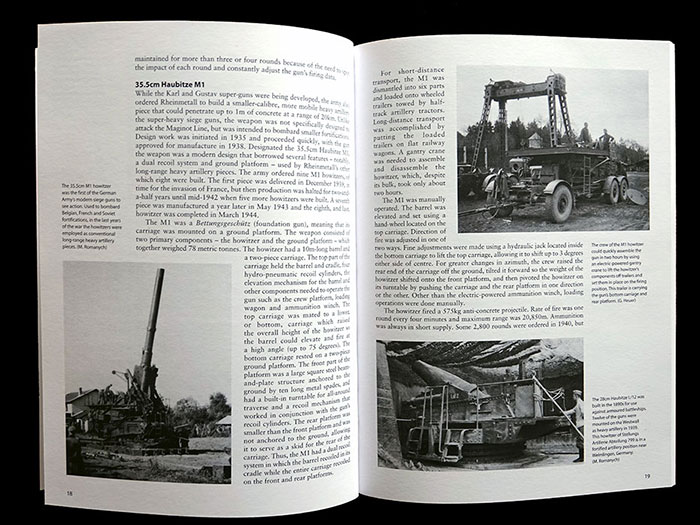|
|
|
|
Osprey Publishing
World War Two German Super-Heavy Siege Guns
by Marc Romanych and Martin Rupp
Reviewed by John Ham

Summary
| Title and Publisher: | Osprey Publishing |
| ISBN: | 978 1 4728 3717 2 |
| Media and Contents: | Paperback 7.21" x 9.61" (also available in eBook and PDF formats);48 pages; full English text |
| Price: | Available online from Osprey Publishing's website |
| Review Type: | FirstRead |
| Advantages: | Well laid out; interesting subjects; good selection of authors' photographs and colour artwork. |
| Disadvantages: | |
| Recommendation: | Recommended. |
FirstRead
Karl and Dora, like evil twins from a German fairy tale, the WWII siblings breathed destruction. Götterdämmerung would be at Sevastopol in 1942.
Designed in the mid 1930s to smash fortresses, constructing these monster guns was so difficult that they were not completed until after the campaigns in Poland and Western Europe, their role taken by refurbished WW1 siege guns like Krupp and Skoda howitzers and mortars.

Eight self-propelled 60cm Karl mortars were built, each named separately and differing in detail.
Dora, a 1,350 tonne behemoth bestrode two sets of rail tracks, had a 32.5m long barrel firing 7.1 tonne projectiles piercing through 8m of concrete. The 35.5cm M1 howitzer was another bunker buster, a foundation gun, with a base resting directly on the ground.
Relocation of these unwieldy weapons was a lengthy and complicated process, requiring disassembly to smaller subunits, special rail transport, road trailers, cranes, and site preparation troops.
The Eastern Front would see the largest operational use of siege guns, and the Sevastopol fortress attack accumulated the biggest concentration of German siege artillery including several Karl mortars and Dora.

In use throughout WWII, though often as heavy artillery, these super-heavy guns failed to live up to their propaganda promise. There is a good assortment of photos mostly from the authors’ collections showing these guns in varied stages of assembly and transport, supplemented by artwork illustrating their subunits and transportation modes.
Recommended
John Ham
Thanks to Osprey for the sample www.ospreybublishing.com

